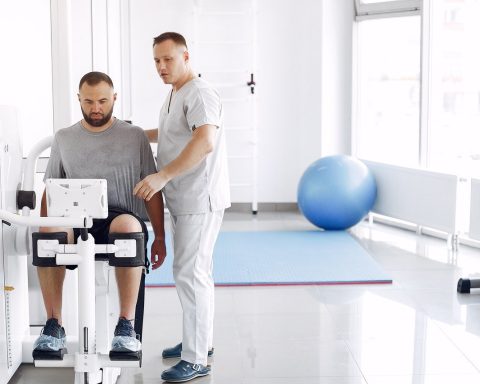In 2017, the President of the United States officially declared that the opioid crisis in America has become a national emergency. For many, this came as a welcome wake-up call for the States. Approximately 115 people in the country die every day after using drugs like heroin and prescription pain relievers, and the CDC has long stated that economic and medical burden of opioid use is worrying. Drug addiction has lingered on the edge of social consciousness for too long, and now, millions are paying the price.
The question is, how can Americans come together to combat the use of opioids and decrease the number of drug-induced medical problems each year? In truth, there’s no simple answer. The use of opioids, both legally and illegally, has wormed itself deeply into society and will take many years to effectively handle.
However, there are certain steps that can be made as a nation to deal with this hugely concerning problem. The U.S. Department of Health recently came up with the five following major ways to lessen the effect of drugs in the country and start being safer about the use of prescription meds.
Improve Access to Treatment and Recovery Services
One of the biggest problems amongst those who use opioids is the lack of treatment. Most people struggling with addiction are not receiving proper psychological and medical assistance, which leads to more problems with their health and overall safety. If America is to ever overcome this national crisis, drug users and people who are dealing with serious addictions must have easy access to drug rehab centers, therapists, doctors, and other forms of treatment and recovery. There must also be more emphasis on the dangers of opioids whenever they are prescribed so that people are aware of the drugs’ seriousness.
Promote the Use of Overdose-Reversing Drugs
Many are unaware that such lifesaving drugs even exist, and if they do know about them, they are unsure as to how they can obtain them. Thanks to state-based grants, more and more hospitals are utilizing overdose-reversal drugs to treat patients on opioids. Medications like naloxone can quickly help someone who has overdosed by restoring their normal respiration and allowing them to recover. The overdose-reversing drugs come in several forms, including injections and nose sprays, and they are thankfully becoming more affordable for the average person. With proper funding and awareness, experts are hoping that many drug-induced deaths can be prevented over the coming years.
Strengthen the Public’s Understanding of the Drug Epidemic
Although it’s certainly no secret that opioid use is a big problem in America, most people are not aware of the situation’s extremity. Highly-addictive drug prescriptions have increased significantly over the past decade, and the number of opioid-induced deaths has multiplied by more than five since 1999. It’s no longer just a problem that hovers at the edge of the average person’s awareness; it’s an epidemic that must be frankly and frequently addressed.
What’s truly concerning is that a large percentage of those deaths occurred because of prescription opioids, which points to a larger problem with how potentially dangerous medications are handed to patients. In order for the crisis to see any kind of improvement in the future, the country, as well as pharmaceutical companies and doctors, must start acknowledging that there is a crisis to begin with.
Provide Support for Research on Pain and Addiction
It is the Department of Health and Human Services’ hope that continued research on prescription drugs, their effects, and their alternatives will help to fight the national drug epidemic. Advances in pharmaceutical and medical fields might be able to find substitutes for popular painkillers like Oxycontin, which is an incredibly addictive medication prescribed to more than six million people each year. Researchers like those at the National Institute on Drug Abuse are constantly working to make healthy developments in the world of pain management and addiction, but all of these discoveries and improvements will take time.
Advance Better Practices for Pain Management
As scientists work to improve the safety and usability of pain medications, what can be done to prevent opioid addictions today? For starters, it seems that powerful painkillers are prescribed far too often and easily. Lawsuits have even been filed against several big drug production companies on the grounds that they are pushing dangerous drugs onto the population too much. Many drug-abuse experts believe that doctors must become less eager to hand out prescriptions for serious drugs, especially when they are known for their addictive properties.
Although opioids can be beneficially used in some cases, officials say that doctors must avoid using them as “quick fixes” to please patients. Investigations about payments for these dangerous drugs, as well as prescription guidelines and warnings, must be conducted. Hopefully, within the next few years, providers will focus more on helping patients make healthy choices than on writing prescriptions as easy, addictive remedies.
In Summary
In certain cases, addictive pain medications need to be prescribed, but America must not forget about the dark side of opioids. Far too many people are becoming addicted to drugs like Oxycontin, fentanyl, hydrocodone, and heroin. If the government and public don’t start to take action, the rates of drug-induced deaths are only going to rise, so it’s time to find better ways to manage pain and spread the word.








